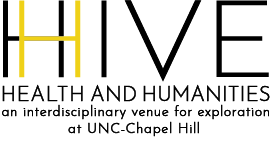16-18 February, 2017
Organizers: Associate Professor A. Fliethmann, Associate Professor R. Kokanovic, Dr. C. Weller
Andreas Vesalius, the eminent anatomist of the Renaissance period, whose works On the Fabric of the Human Body (1543) are often regarded as the beginnings of medicine as a modern science, was quite aware of the impact the printing press and the image had for a new and seemingly rigorous methodological understanding of the (bio)medical body. He was anxious that the “detailed diagrams of the parts (and God grant that the printers will not ruin them!)” were given the proper and meticulous attention as “illustrations greatly assist the understanding, for they place more clearly before the eyes what the text, no matter how explicitly, describes” (Vesalius). Present day medical visualization techniques too are often still perceived as able to reveal a truth that texts will not capture with the same degree of precision. In particular neuroimaging seems to have cautiously inherited this perception: “Neuroimaging has transposed psychological phenomena into visual categories and thus changed their epistemic and cultural status. How profound and sustained these changes will be is not yet clear, […]” (M. Hagner).
Neither the anatomists of the Renaissance nor today’s neuroscientists have completely ignored the epistemic role that different ‘technological’ depictions of the body play in defining the ‘truth’ about the (bio)medical body however, they have not given questions of media theoretical implications the appropriate epistemological attention, even though changing views about the (bio)medical body are indebted as much to technology as to methodology and history.
Our knowledge is continuously constructed where image, text, and numbers meet or miss each other. What could possibly be known without a medium, be it language, signs, images or numbers? These are serious questions addressing the role that any materiality of communication plays in relation to the communicated content. And that is true for research in cultural studies as much as it is for the sciences.
In particular the perspectives, depictions and imaginings of the (bio)medical body in history and across disciplines now seem to promise an open field of intellectual investigations in this respect that warrants dialogue. The conference therefore seeks to address the relationship between inner imagination, the (bio)medical body and the external image: From the Renaissance paradigm of anatomy, to Foucault’s “birth of the clinic” and the institutionalised construction of a “medical gaze”; from the 19th century interest in public displays of the (bio)medical body to photography and its “visual” archives of madness; from film, literature and psychoanalysis to psychiatric art collections’; from body dysmorphia as identity disorder to digitalised bodies in mass media.
The conference wishes to create a broader context for analysing cultural, literary, scientific and political constructions of the (bio)medical body, and therefore seeks to generate interest in the topic from a wide range of disciplines from anthropology, history, media theory, literature, art history, film, political studies, socials sciences, criminology, law and medicine.
We would like to invite papers to the following panels but will also accept topics of interest not captured by the panels listed:
1) Imagination and Medicine
2) Medical Imaging, Images of the Body
3) (Bio)medical Body in Film, Literature and Theatre
4) The Politics of the (Bio)medical Body
5) (Bio)medical Body in Art History
6) (Bio)medical Body and the Law
7) Media Theory, the Body of Imagination & the Image of the Body
8) Psychiatric Images / Outsider Art
Individual proposals should consist of an abstract (approx. 200-300 words) for a paper of 20 minutes duration. Please include a brief biographical statement (no more than 100 words) with your abstract. Please submit proposals no later than Friday, 1 July 2016 to:
https://artsonline.wufoo.eu/forms/anatomy-of-the-image/
Please note: It is expected that selected papers will be submitted for publication.

